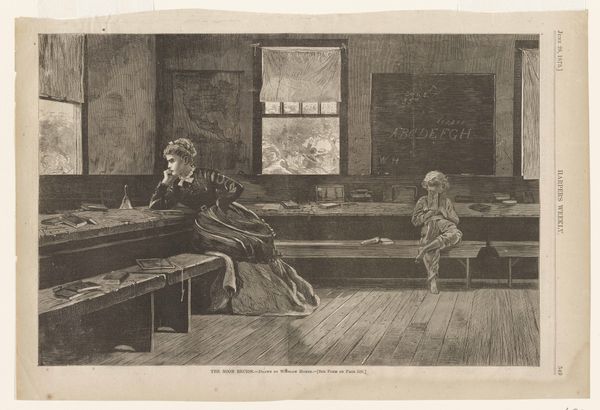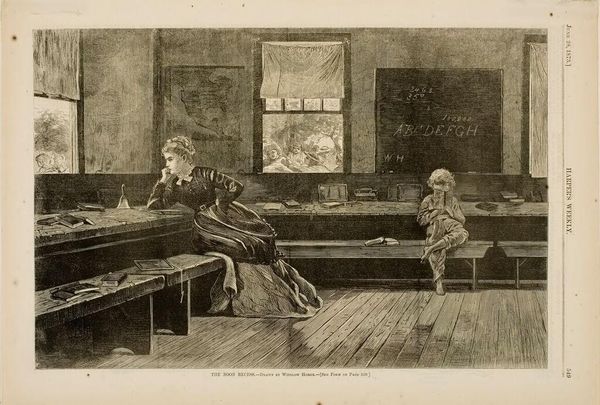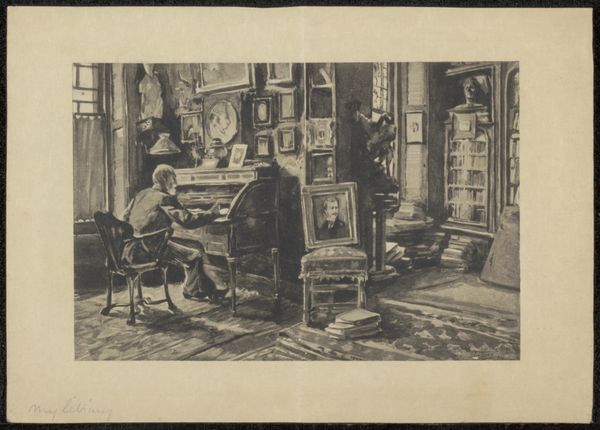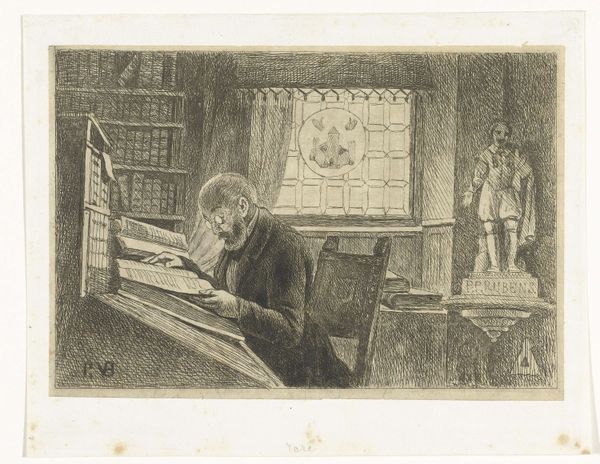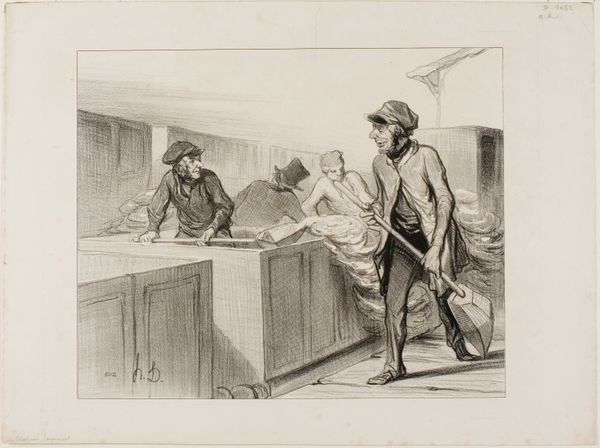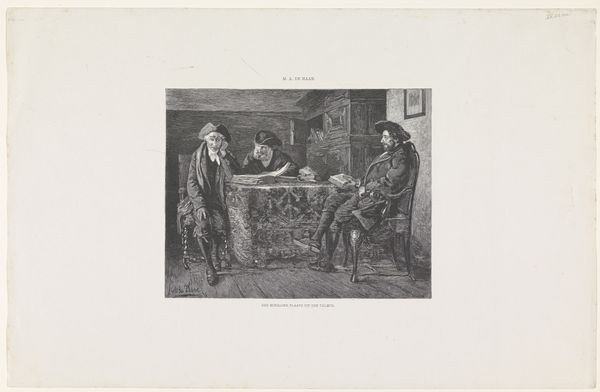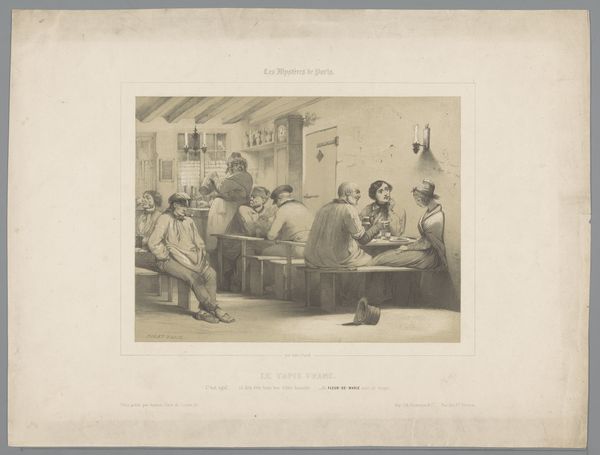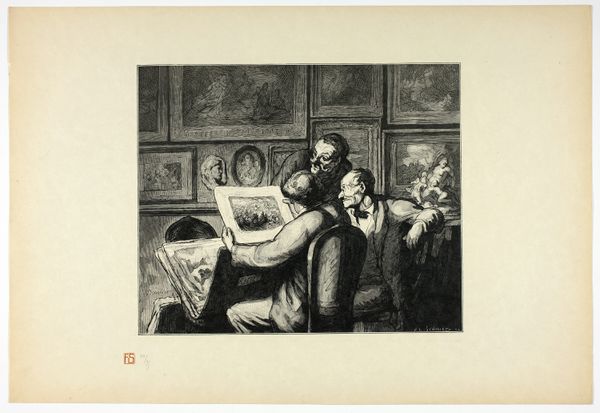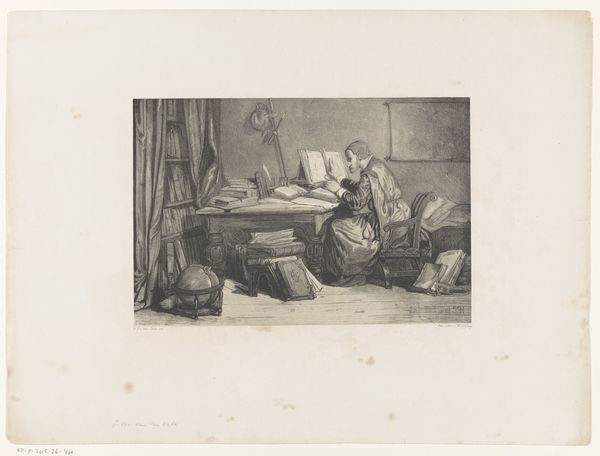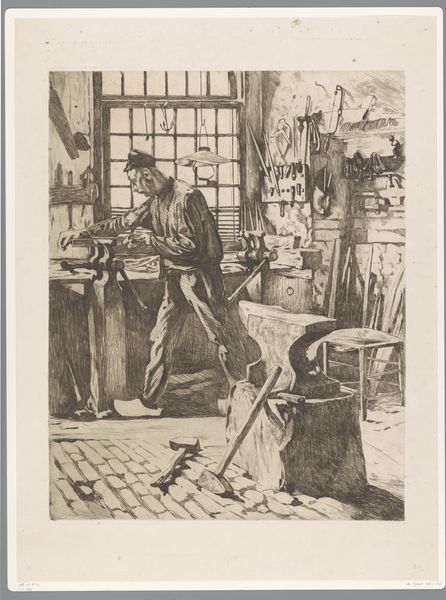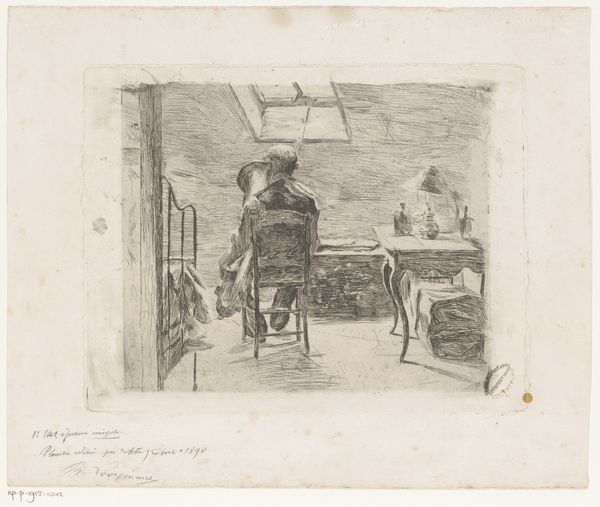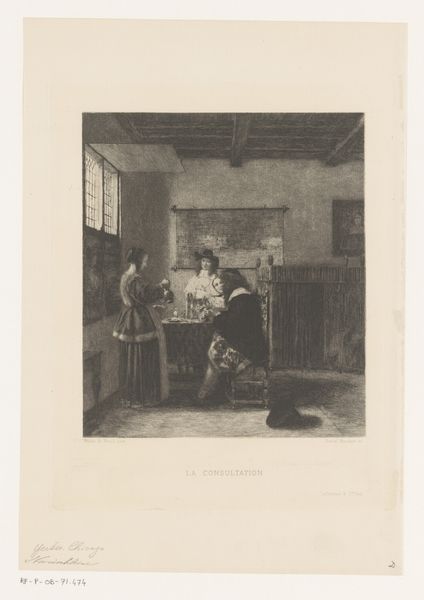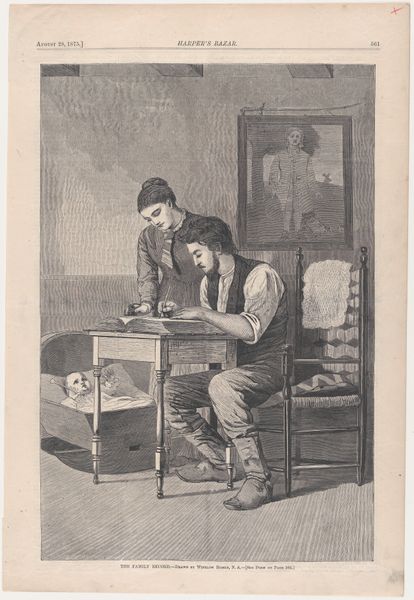
The Noon Recess (from "Harper's Weekly," Vol. XVII) 1873
0:00
0:00
drawing, print, engraving
#
drawing
#
16_19th-century
#
narrative-art
# print
#
impressionism
#
child
#
19th century
#
men
#
genre-painting
#
engraving
Dimensions: Image: 9 1/8 x 13 5/8 in. (23.2 x 34.6 cm) Sheet: 10 7/8 x 15 15/16 in. (27.6 x 40.5 cm)
Copyright: Public Domain
Curator: Winslow Homer's "The Noon Recess," published in Harper's Weekly in 1873, is a fascinating snapshot of 19th-century American life. It’s an engraving that provides so much context for understanding societal structures of the period. Editor: You know, my first thought seeing this—besides feeling a sudden urge to scratch chalk on a board—is just how incredibly lonely it feels. Curator: Yes, that solitary atmosphere really permeates the scene. Consider the representation of the female schoolteacher and the male student against the backdrop of the social conditions after the Civil War. The work encapsulates themes related to gender and educational access during that time. Editor: Right, you’ve got her stuck in this pose, almost like she’s guarding her domain, or perhaps stuck in thought while observing that wild gaggle of kids causing havoc outside! The lone barefoot boy seems pensive, apart from her as well, each in their little universe during what’s supposed to be a break. It's almost suffocating. Curator: And let's not ignore the loaded gazes exchanged—or, perhaps, *not* exchanged. Power dynamics are encoded through pose, placement, even the items carefully arranged on desks or held in hands. Who is allowed leisure and reflection, and at what cost? We must ask who profits and who is silenced here. Editor: Gosh, now that you say it... There’s something slightly sinister about those kids. Like they know something we don’t! Maybe they know how miserable school will make that solitary little dude! Sorry, getting carried away, it really just hits you hard. It’s deceptively simple but so intense! Curator: Indeed, the genius is that tension between simplicity of scene and depth of meaning. By considering this piece within an intersectional framework, it opens up layers regarding labor, childhood, gender roles, and the mythologies of nationhood and educational systems still operative today. Editor: Definitely gives you the feels! Thanks for shining that light on it; all I know is Homer totally nailed the human condition, and he sure can make an atmosphere. Now I'm feeling inspired…or maybe just need a recess!
Comments
No comments
Be the first to comment and join the conversation on the ultimate creative platform.
